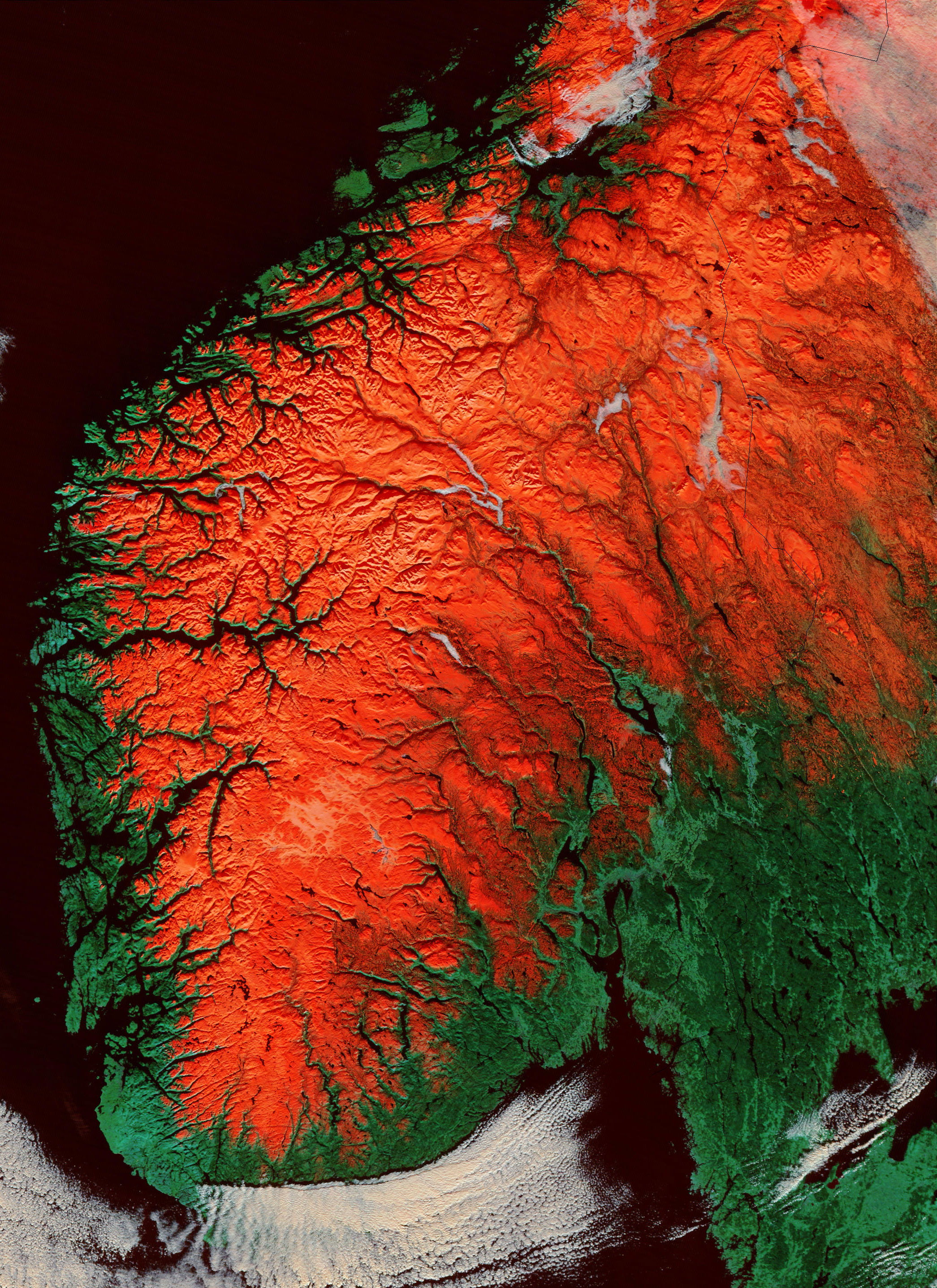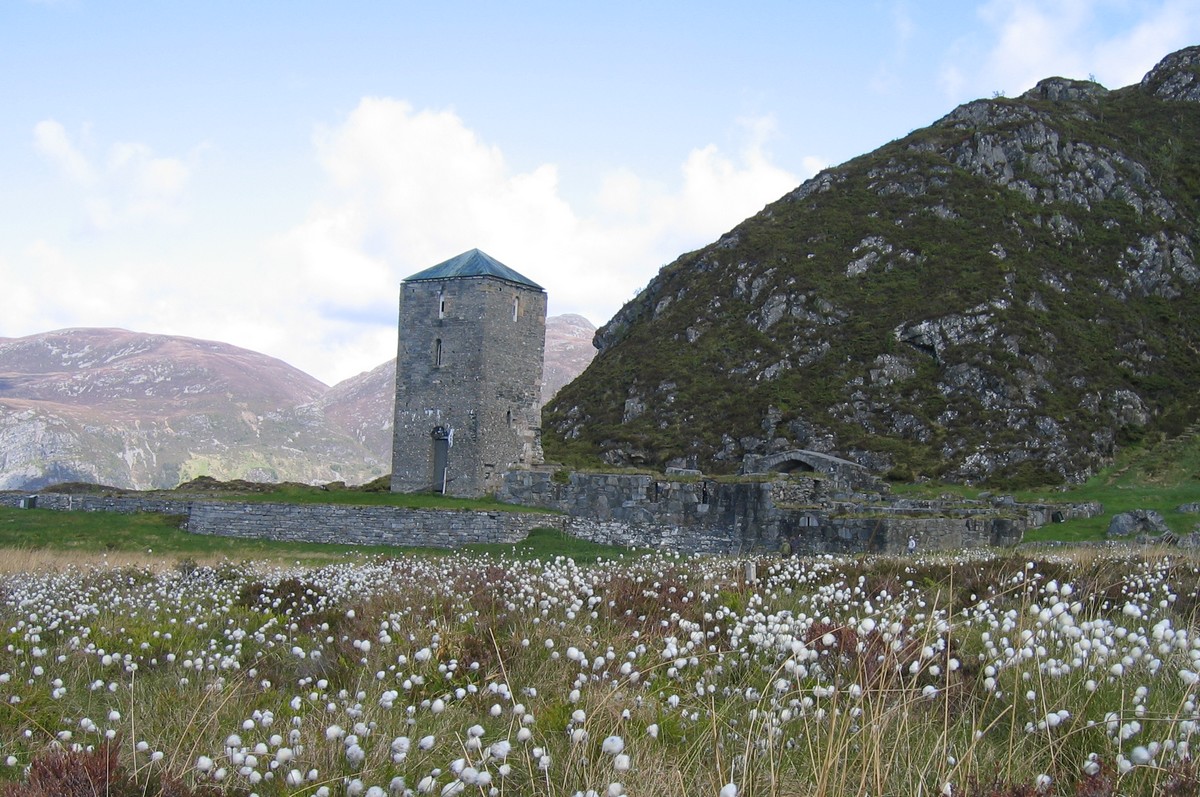|
Strandflat
Strandflat () is a landform typical of the Norway, Norwegian coast consisting of a flattish erosion surface on the coast and near-coast seabed. In Norway, strandflats provide room for settlements and agriculture in Norway, agriculture, constituting important cultural landscapes. The shallow and protected waters of strandflats are valued fishing grounds that provide sustenance to traditional fishing settlements. Outside Norway proper, strandflats can be found in other high-latitude areas, such as Antarctica, Alaska, the Northern Canada, Canadian Arctic, the Far North (Russia), Russian Far North, Greenland, Svalbard, Sweden, and Scotland. The strandflats are usually bounded on the landward side by a sharp break in slope, leading to mountainous terrain or paleic surface, high plateaux. On the seaward side, strandflats end at submarine slopes. The bedrock surface of strandflats is uneven and tilts gently towards the sea. The concept of a strandflat was introduced in 1894 by Norwegia ... [...More Info...] [...Related Items...] OR: [Wikipedia] [Google] [Baidu] |
Nordland
Nordland (; , , , ) is one of the three northernmost Counties of Norway, counties in Norway in the Northern Norway region, bordering Troms in the north, Trøndelag in the south, Norrbotten County in Sweden to the east, Västerbotten County to the south-east, and the Atlantic Ocean (Norwegian Sea) to the west. The county was formerly known as ''Nordlandene amt''. The county administration is in the Bodø (town), town of Bodø. The remote Arctic island of Jan Mayen has been administered from Nordland since 1995. In the southern part of the county is Vega Municipality, Vega, listed on the UNESCO World Heritage Site list. Districts The county is divided into traditional districts. These are Helgeland in the south (south of the Arctic Circle), Salten in the centre, and Ofoten in the north-east. In the north-west lie the archipelagoes of Lofoten and Vesterålen. Geography Nordland is located along the northwestern coast of the Scandinavian Peninsula in Northern Norway. Due to t ... [...More Info...] [...Related Items...] OR: [Wikipedia] [Google] [Baidu] |
Hans Reusch
Hans Henrik Reusch (5 September 1852 – 27 October 1922) was a Norwegian geologist, geomorphologist and educator. He served as director of the Geological Survey of Norway. Biography Born in Bergen, he was educated at the University of Leipzig and Heidelberg University. He graduated Ph.D. at the University of Christiania (now University of Oslo) in 1883. He was married to the painter Helga Marie Ring Reusch He joined the Geological Survey of Norway in 1875, and was its Director from 1888 to 1921. He was a Sturgis Hooper Professor of Geology at Harvard University (1897–98). He is distinguished for his research on the crystalline schists and the Palaeozoic rocks of Norway. He discovered Silurian fossils in the highly altered rocks of the Bergen region; and in 1891 he called attention to the so-called " Reusch's Moraine" a Precambrian conglomerate of glacial origin in the Varanger Fjord, a view confirmed by A. Strahan in 1896, who found glacial striations on the roc ... [...More Info...] [...Related Items...] OR: [Wikipedia] [Google] [Baidu] |
Rauk
A rauk is a column-like landform in Sweden, often equivalent to a stack (geology), stack. Rauks often occur in groups called ''raukfält'' 'rauk fields'. The limestone rauks of Gotland in the Baltic Sea are among the best known examples. Sweden Rauks are common on the island of Gotland, Sweden and on the smaller islands belonging to Gotland County. Fårö island in Gotland, is particularly rich in rauks. While Fårö is on the northern end of Gotland Holmhällars raukfält at Vamlingbo in the southern end of Gotland is also rich in rauks. Rauks in Gotland often occur in groups or fields, so-called ''raukfält''. Rauks can be found both near Baltic Klint, Gotland's many cliffs or far away from these. Other localities with rauks include Byrums raukar, Byrum on northwestern Öland neighboring Blå Jungfrun island, Hovs Hallar and Kullaberg in northwestern Scania and Härnön in northern Sweden's High Coast. Rauks on Öland are made up of limestone. A few rauks are located in the S ... [...More Info...] [...Related Items...] OR: [Wikipedia] [Google] [Baidu] |
Paleic Surface
The paleic surface or palaeic surface (, ) is an erosion surface of gentle slopes that exist in South Norway. Parts of it are a continuation of the Sub-Cambrian peneplain and Muddus Plains found further east or equivalent to the strandflat coastal plains of Norway. Hardangervidda, a particularly flat and elevated part of the Paleic surface formed in the Miocene at sea level. Although the tilted plateau-like topography of south Norway had been noted since the early 1800s, the first formal description was by Hans Reusch in 1901, using a denudation chronology approach invoking several of W.M. Davis’ ideas of a cycle of erosion. Reusch also coined the name ''Paleic surface''. The Paleic surface is sometimes erroneously considered equal to Norway's "pre-glacial surface" – the surface that existed in Norway just before the Quaternary glaciations. South Norway: the type area There have been various attempts at defining the subset of surfaces that compose the paleic surface ... [...More Info...] [...Related Items...] OR: [Wikipedia] [Google] [Baidu] |
Western Norway
Western Norway (; ) is the Regions of Norway, region along the Atlantic coast of southern Norway. It consists of the Counties of Norway, counties Rogaland, Vestland, and Møre og Romsdal. The region has no official or political-administrative function. The region has a population of approximately 1.4 million people. The largest city is Bergen and the second-largest is Stavanger. Historically the regions of Agder, Vest-Telemark, Hallingdal, Valdres, and northern parts of Gudbrandsdal have been included in Western Norway. Western Norway, as well as other parts of historical regions of Norway, shares a common history with Denmark-Norway, Denmark, the Faroe Islands and Iceland and to a lesser extent the Netherlands and Britain. For example, the Icelandic horse is a close relative of the Fjord horse and both the Faroese language, Faroese and Icelandic languages are based on the Old West Norse. In early Norsemen, Norse times, people from Western Norway became settlers at the West ... [...More Info...] [...Related Items...] OR: [Wikipedia] [Google] [Baidu] |
Post-glacial Rebound
Post-glacial rebound (also called isostatic rebound or crustal rebound) is the rise of land masses after the removal of the huge weight of ice sheets during the last glacial period, which had caused isostatic depression. Post-glacial rebound and isostatic depression are phases of glacial isostasy (glacial isostatic adjustment, glacioisostasy), the deformation of the Earth's crust in response to changes in ice mass distribution. The direct raising effects of post-glacial rebound are readily apparent in parts of Northern Eurasia, Northern America, Patagonia, and Antarctica. However, through the processes of ''ocean siphoning'' and ''continental levering'', the effects of post-glacial rebound on sea level are felt globally far from the locations of current and former ice sheets.Milne, G.A., and J.X. Mitrovica (2008) ''Searching for eustasy in deglacial sea-level histories.'' Quaternary Science Reviews. 27:2292–2302. Overview During the last glacial period, much of northern Euro ... [...More Info...] [...Related Items...] OR: [Wikipedia] [Google] [Baidu] |
Sea Caves
A sea cave, is also known as a littoral cave, a type of cave formed primarily by the wave action of the sea. The primary process involved is erosion. Sea caves are found throughout the world, actively forming along present coastlines and as relict (geology), relict sea caves on former coastlines. Some of the largest wave-cut caves in the world are found on the coast of Norway, but are now 100 feet or more above present sea level. These would still be classified as littoral caves. By contrast, in places like Thailand's Phang Nga Bay, solutionally formed caves in limestone have been flooded by the rising sea and are now subject to littoral erosion, representing a new phase of their enlargement. Some of the best-known sea caves are European. Fingal's Cave, on the island of Staffa in Scotland, is a spacious cave some 70 m long, formed in columnar jointing, columnar basalt. The Blue Grotto (Capri), Blue Grotto of Capri, although smaller, is famous for the apparent luminescent quality ... [...More Info...] [...Related Items...] OR: [Wikipedia] [Google] [Baidu] |
Relict (geology)
A relict, in geology, is a structure or mineral from a parent rock that did not undergo metamorphic change when the surrounding rock did, or a rock that survived a destructive geologic process. Some geologic processes are destructive or transformative of structures or minerals, and when a process is not complete or does not completely destroy certain features, the left-over feature is a relict of what was there before. For example, relict permafrost is an area of ancient permafrost which remains despite a change in climate which would prohibit new permafrost from forming or it could be a fragment of ancient soil or sediment found in a younger stratum. A relict sediment is an area of ancient sediment which remains unburied despite changes in the surrounding environment. In pedology, the study of soil formation and classification, ancient soil found in the geologic record is called a paleosol, material formed in the distant past on what was then the surface. A relict paleosol is ... [...More Info...] [...Related Items...] OR: [Wikipedia] [Google] [Baidu] |
Continental Shelf
A continental shelf is a portion of a continent that is submerged under an area of relatively shallow water, known as a shelf sea. Much of these shelves were exposed by drops in sea level during glacial periods. The shelf surrounding an island is known as an "''insular shelf''." The continental margin, between the continental shelf and the abyssal plain, comprises a steep continental slope, surrounded by the flatter continental rise, in which sediment from the continent above cascades down the slope and accumulates as a pile of sediment at the base of the slope. Extending as far as 500 km (310 mi) from the slope, it consists of thick sediments deposited by turbidity currents from the shelf and slope. The continental rise's gradient is intermediate between the gradients of the slope and the shelf. Under the United Nations Convention on the Law of the Sea, the name continental shelf was given a legal definition as the stretch of the seabed adjacent to the shores ... [...More Info...] [...Related Items...] OR: [Wikipedia] [Google] [Baidu] |






